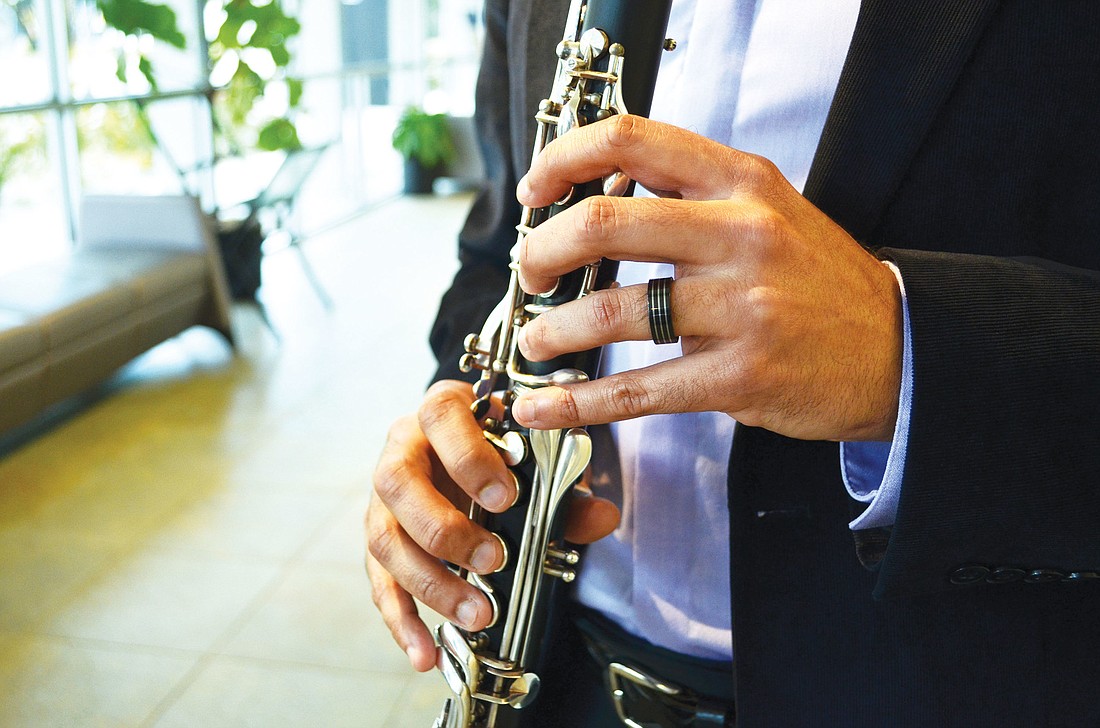- November 24, 2024
-
-
Loading

Loading

Everyone has a favorite. Whether it’s a recent radio hit or a timeless soundtrack staple, everyone has a love song that connects to the very core of his or her emotions. But what exactly separates the good love songs from the sappy odes of passion?
The Sarasota Orchestra is delving into the art and nature of love songs — one of the most ubiquitous musical sub-genres — with the fourth entry in its annual “Great Escapes” series: “Be Mine.” Running Feb. 11 to Feb. 14, the concert’s song list explores a wide range of source materials, time period and emotions.
Standards from Broadway musicals include Leonard Bernstein’s “West Side Story,” George and Ira Gershwin’s “Crazy For You” overture and Richard Rodgers and Oscar Hammerstein II’s “Cinderella.” The cinema is represented by the theme from Otto Preminger’s 1944 film noir “Laura,” music from the 1980 romance “Somewhere in Time” and the galactic love song “Across the Stars” by the indelible John Williams from “Star Wars Episode II: Attack of the Clones.”
And more classical fare is included as well, such as Howard Hanson’s opera “Merry Mount,” the popular “Con te Partiro” by Francesco Sartori and Lucio Quarantotto (made popular by vocalist Andrea Bocelli) and Felix Mendelssohn’s “Wedding March” from his depiction of William Shakespeare’s “A Midsummer Night’s Dream,” among others.
“We’re always looking to make a connection with our audience, and through such varied music we play we hope to reach them and make a difference,” says Christopher Confessore, visiting conductor and music director of the Brevard Symphony Orchestra.
When Confessore organized the song lineup of this concert series about a year ago, he noticed a peculiar pattern occurring.
“I noticed the songs were all falling into different categories: a sad or happy ending,” says Confessore. “And I realize this would be a fun way to set up the concert into two parts.”
This dynamic of yearning and uncertainty is a common theme throughout not only the program but most love songs. It’s the common thread of the love story at the heart of the greatest love songs.
“There’s a constant presence of human emotions everyone shares,” says George Nickson, principal percussionist for the Sarasota Orchestra, about the DNA of great love songs. “There have to be moments of joy and great difficulty. There exists in that wide range of emotions a guaranteed place to connect with the listener.”
According to Bharat Chandra, principal clarinetist for the Sarasota Orchestra, great love songs continue the conversation that such strong emotions evoke within everyone.
“It’s something where everyone can share the same feeling but where everyone also has an individual feeling,” says Chandra. “But, above all, it transports us in our mind to a time when we were better because of someone — when your eyes meet, or the curl of someone’s hair, or the sound of their voice.”
Love Song Diaries:
Conductor Christopher Confessore: “I think a good melody, a singable melody for me, is something I look for. A sentimental lyric and I’m a sucker for a half-step modulation: the old Barry Manilow trick. Mostly his ballads would modulate up a half-step, and that gives a certain psychology, a little bit of a lift. And I’ve always liked that. It’s surprising; some love songs spend a lot of time with minor keys. ‘My Funny Valentine’ is a sad song and not the most romantic song.”
George Nickson: “Certain pieces activate the orchestra in different ways.‘West Side Story,’ for the American musician, is the magnum opus of Broadway. In addition, John Williams’ compositions have a special quality for me. He writes for the orchestra as if it’s one single instrument.”
Bharat Chandra: “Nat King Cole’s ‘You’re Looking At Me,’ performed by Diana Krall, has this extra element of aspiration. When you feel that song in your heart you aspire to find that feeling, that love, again.”